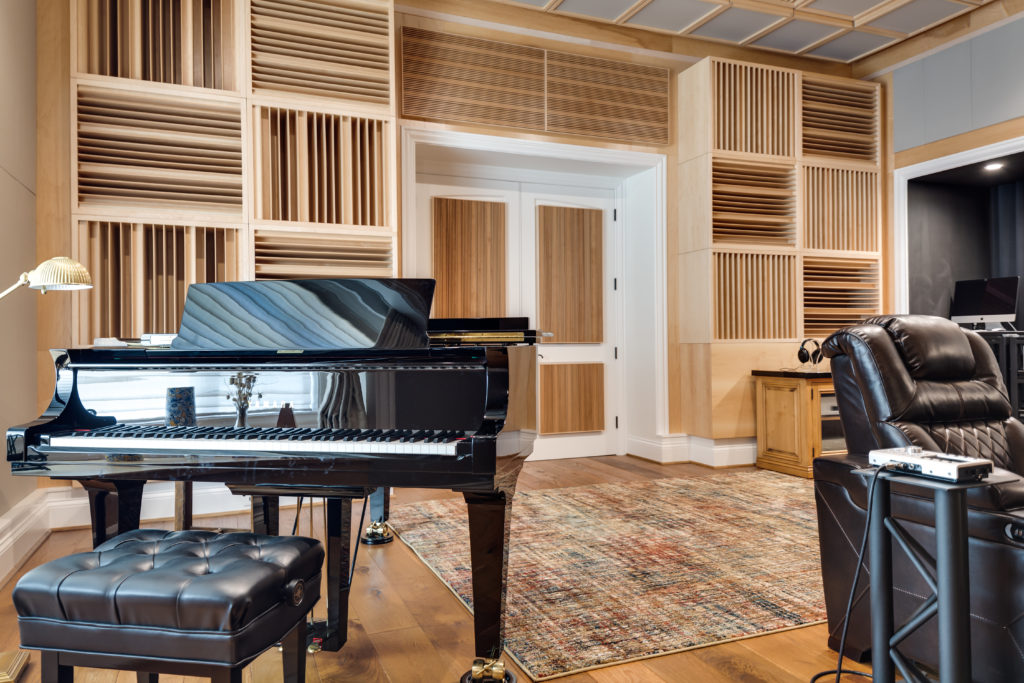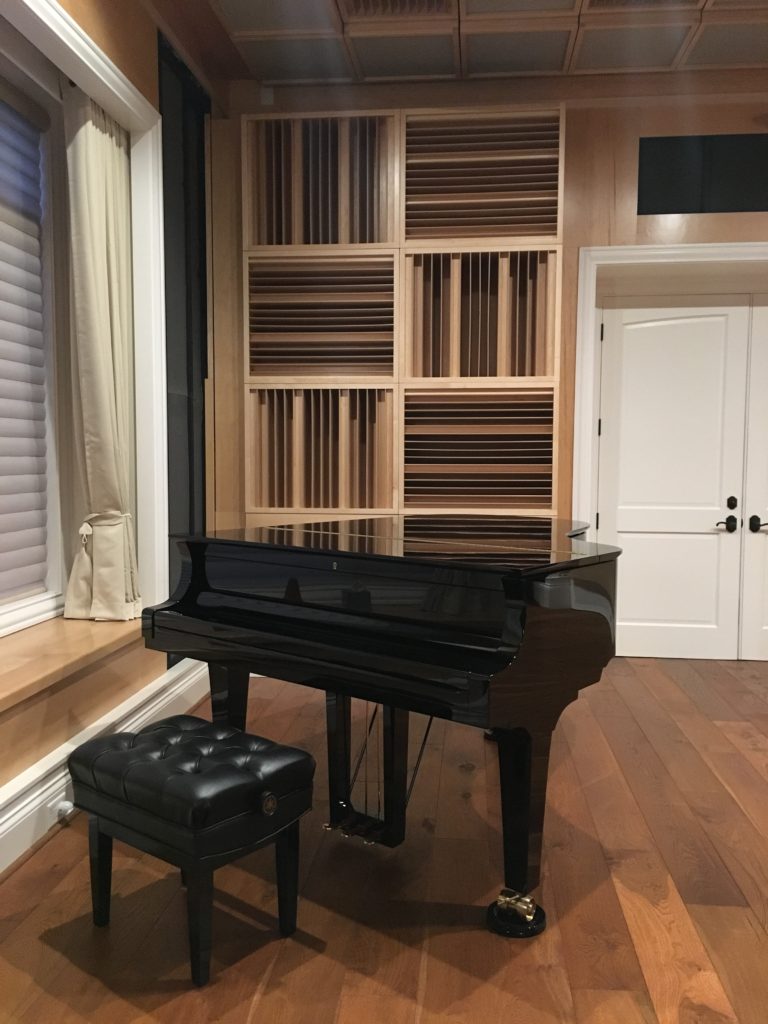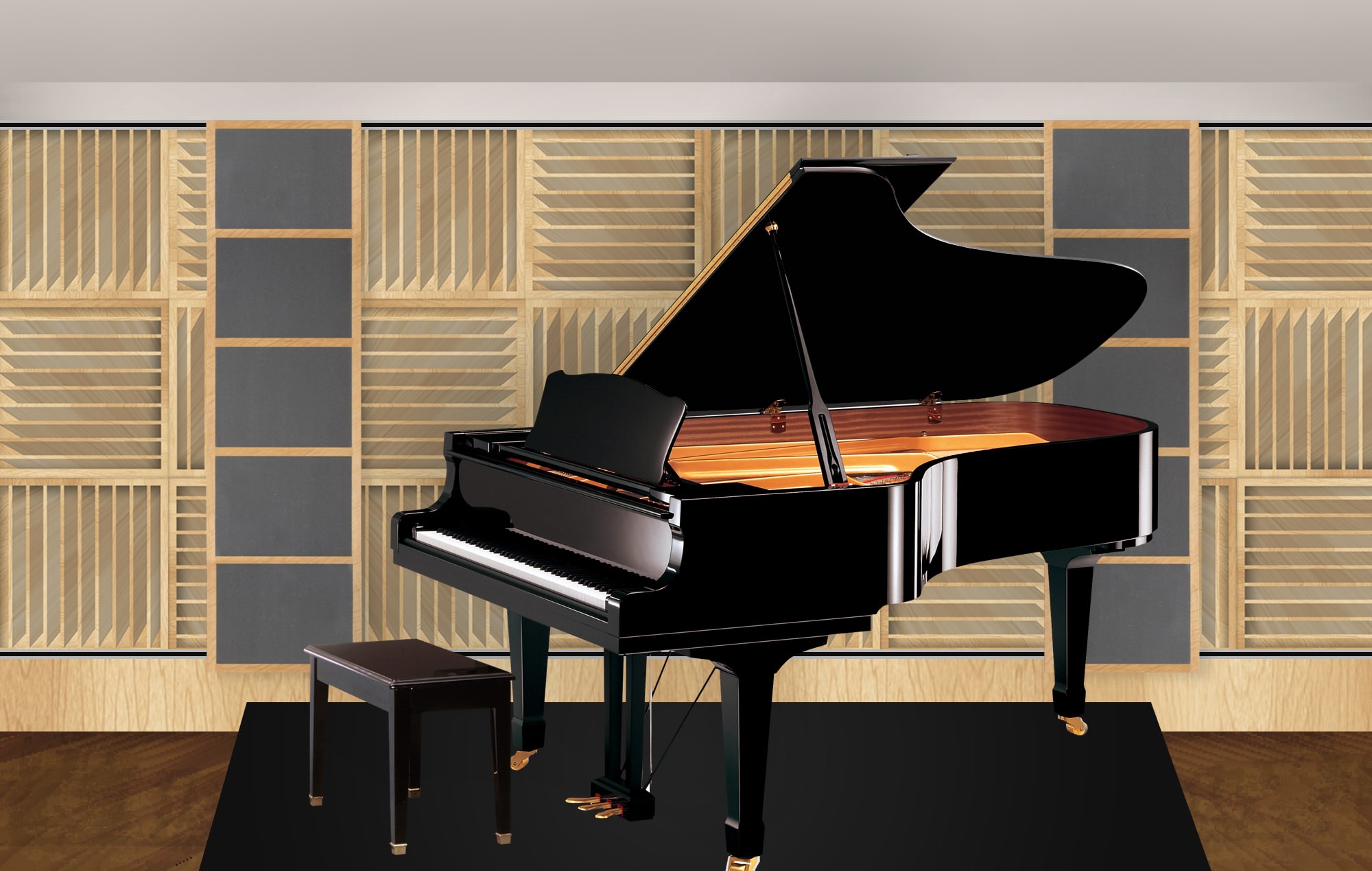A customer recently emailed me to ask what kind of acoustic treatment for a piano room I would recommend. Well, the first issue we have to look at is, What are you doing with this piano? Are you recording? Are you playing for pleasure? Are you playing and entertaining with six or eight people in the room? We really have to figure out what the usage is and I constantly try to get people to focus on this. What are you going to be doing in the room? We have updated this blog on 12/5/19 to reflect current changes in thinking and knowledge.
People will say “Well I’m going to be doing this and I’m going to be doing that”. Okay how much of this and how much of what are you doing? Because each one has different acoustical requirements. We’ll try to marry the two together and get you something that you can live with so you’re not running around moving products out of the room and things like that but usage is critical. The acoustical treatment requirements for each room usage is different. We will treat a piano room one way, a live room another way, and a voice room even differently. Let’s focus on a piano room and piano room acoustics.

Quadratic Diffusion on Rear Wall
First Things First
First, we must select the proper width, height, length ratio for our piano. It is a full range instrument producing energy from 20 Hz. – 20k. We must be able to address the 30′, 40′ and 50′ lengths of low-frequency energy. The ceiling height is the lowest of all of the three dimensions and we must try and get at least 13′ for our piano room acoustics. Width and length must exceed 20′ to allow for enough room for everything below middle c to be heard.
What is the Function of Your Piano Room?
We have a piano, what is a piano? It’s a source of energy. Speakers are sources of energy, so no real difference there as far as room acoustics is concerned. One is electronic, one is played with your fingers, so either way its an energy-producing device in a room. What are we going to do with that energy-producing device in the room? Are we recording its energy? Are we listening to its energy? Are we playing for the enjoyment of others? All of these issues have to be addressed and all of them will take a little bit different acoustical treatment.
Piano Room New Build: https://acousticfields.com/very-dedicated-listening-piano-rooms/
The Piano is Difficult to Record.
Obviously, in the recording process, microphone placement is critical. Out of every ten piano recordings that I hear, I hear one that I like. I hear one that really captures the piano and not the room and this is all because of mic placement. We won’t go into microphone placement in this discussion but room acoustically, reverb times are really critical so the reflections off the surfaces have to be controlled.

Piano Room Real Wall Treatment
Recording in Piano Room Acoustics
Now how do we do that? Do we use absorption? Do we use diffusion? Well, what are we trying to do with the recording? Do we want a lively energetic spacious sound (which would include the room sound)? Do we want to damp the room out? Do we want to minimize the reflections of the room and lower the reverberation time out to a point where there is no room sound? So there’s a lot of questions that we need to ask but as a general rule, reflections, because pianos go all the way down to twenty cycles/twenty-five cycles and up to eight, nine, ten thousand cycles… so you’ve got to allow for the frequency response of the instrument and the reverberation time of the room, that would be the first area that we would look at.
I have been in many rooms where they lower the reverberation time down really low, where it’s kind of uncomfortable, and then they add diffusion and they get a nice, clean, well-defined signal. A nice, clean, well-defined signal at the microphone positions for room sound. So, you know there again no real simple one-sentence answer I can give you, it really depends on the usage and what you’re trying to do in the room.
Piano Room Acoustic Treatment When Playing in a Home-Based Set-Up
In this situation, I would say you want to control your reverb times and get them down to a comfortable level so that the people in the room are not hearing more room sound than they are the piano. What is that number? Well, there’s no set number, it’s subjective. There are ranges that you can work with. The reverb time in our studio is twenty-three seconds. Uncomfortable for a lot of people. But you know, it’s a subjective thing. Once again, what are you trying to accomplish? So if playing the piano for friends, before trying to get your friends to hear the piano, you’d better control the reflections in the room first, and then that should be enough to make everybody happy.
Obviously another solution would be to bring more friends into the room because each human being has the absorption coefficient of twelve square feet of carpet. So just think of each one of your friends as a carpet sample. If you can’t afford acoustic treatment just let your friends stand around your room. After all, we’re just big sacks filled with water, so we have really good sound absorption qualities if you can get enough of us together.
Treatment
We must use low-frequency absorption, middle and high-frequency absorption along with diffusion. Diffusion for the ceiling to make the microphones think the ceiling is really 20′ instead of 13′. We use absorption for middle and high frequencies on the four walls. We must use a middle and high-frequency tool that is designed to absorb music and voice at the correct rate and level. Our Studio Pro Foam was designed specifically for music and voice with the proper rates and levels of absorption.
Studio Pro Foam: https://acousticfields.com/product/acoustic-foam/
Learn More About Us At Acoustic Fields: https://acousticfields.com/about/
In Summary
I hope this discussion on acoustic treatment for a piano room helped. If you have any questions feel free to contact me directly at: 520 – 392 – 9486 MST or info@acousticfields.com. If you would like to learn more about room acoustics please sign up for my free videos and ebook by joining the mailing list here. I send room tuning tips and things for you to test in your room every Wednesday. They are easy to follow and will really help you enjoy more of your music.
Thanks and speak soon
Dennis









The discussion on ductwork noise transmission from Acoustic Fields highlights crucial aspects of HVAC system acoustics. The movement of air…
Great build plans. thank you Denis
You must use absorption. Never place a chair against a wall.
A friend and I built several diffusors using these plans and they turned out absolutely beautiful. Very good instructions and…